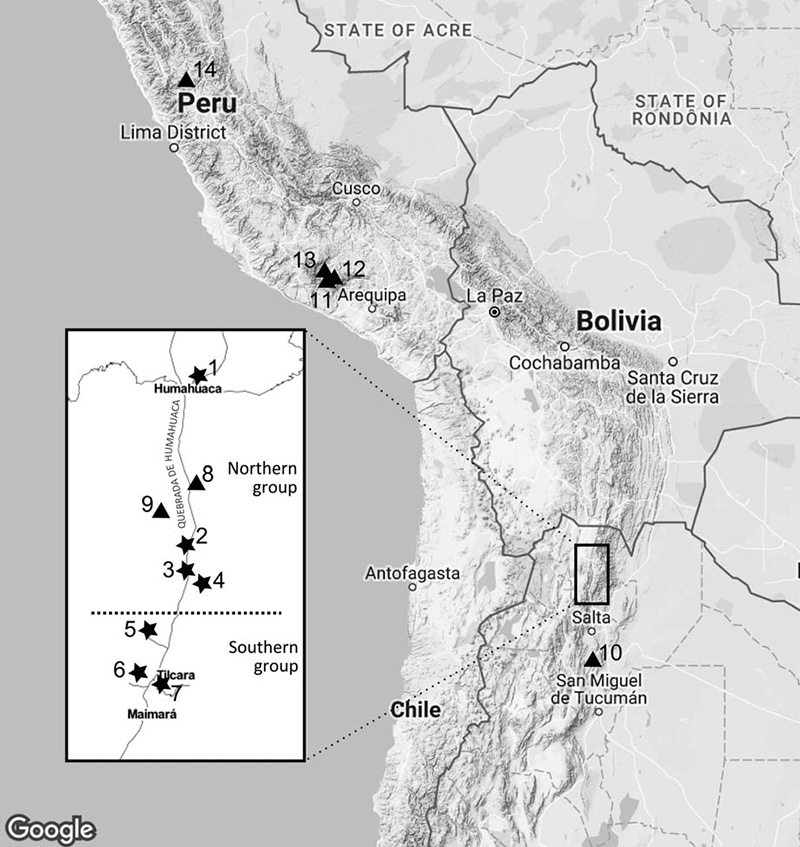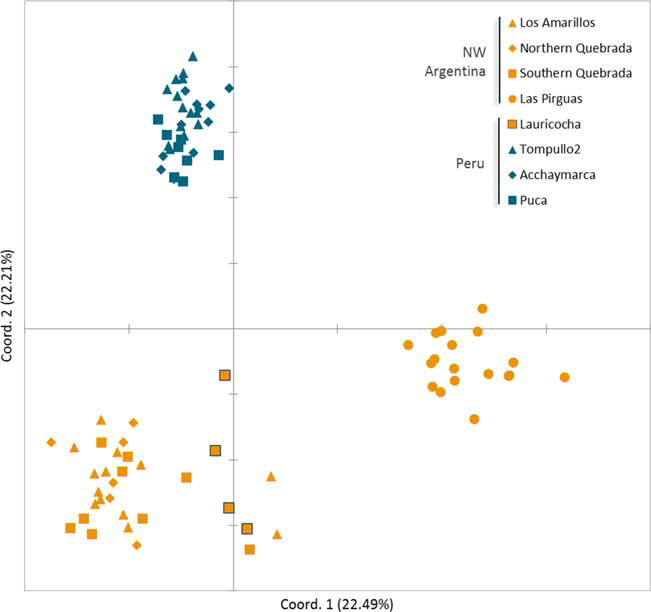Ancient DNA reveals temporal population structure within the South‐Central Andes area, by Russo et al. Am. J. Phys. Anthropol. (2018).
Abstract (emphasis mine):
Objectives
The main aim of this work was to contribute to the knowledge of pre‐Hispanic genetic variation and population structure among the South‐central Andes Area by studying individuals from Quebrada de Humahuaca, North‐western (NW) Argentina.Materials and methods
We analyzed 15 autosomal STRs in 19 individuals from several archaeological sites in Quebrada de Humahuaca, belonging to the Regional Developments Period (900–1430 AD). Compiling autosomal, mitochondrial, and Y‐chromosome data, we evaluated population structure and differentiation among eight South‐central Andean groups from the current territories of NW Argentina and Peru.

Results
Autosomal data revealed a structuring of the analyzed populations into two clusters which seemed to represent different temporalities in the Andean pre‐Hispanic history: pre‐Inca and Inca. All pre‐Inca samples fell into the same cluster despite being from the two different territories of NW Argentina and Peru. Also, they were systematically differentiated from the Peruvian Inca group. These results were mostly confirmed by mitochondrial and Y‐chromosome analyses. We mainly found a clearly different haplotype composition between clusters.Discussion
Population structure in South America has been mostly studied on current native groups, mainly showing a west‐to‐east differentiation between the Andean and lowland regions. Here we demonstrated that genetic population differentiation preceded the European contact and might have been more complex than thought, being found within the South‐central Andes Area. Moreover, divergence among temporally different populations might be reflecting socio‐political changes occurred in the evermore complex pre‐Hispanic Andean societies.

See also: